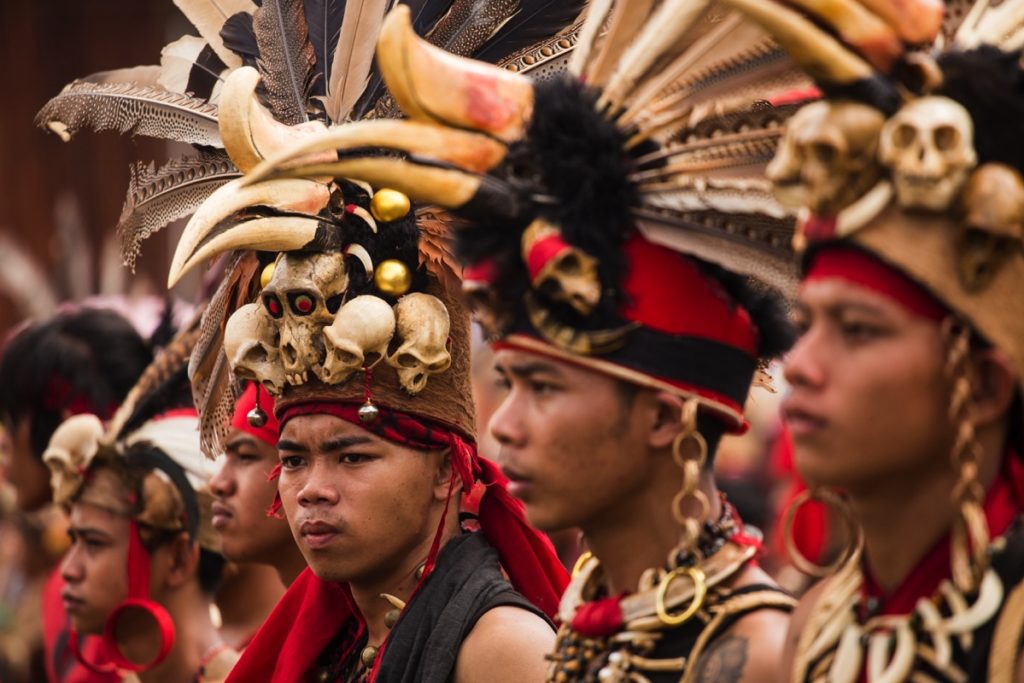Indonesia is a wonderful collection of ethnic groups and languages. All of them are proud to preserve their cultural legacy, and among them traditional costumes.
Such attires are not worn on a daily basis but they have become an essential features of wedding ceremonies.
Traditional costumes of Sumatra
Aceh
Gayo (Aceh highlands)
Batak (North Sumatra)
Batak is an umbrella term for a number of ethnic groups inhabiting the highlands of North Sumatra.
Batak Toba
Batak Mandailing
Batak Karo
Minangkabau (West Sumatra)
In West Sumatra, bride are commonly seen with a massive headdress called a sunting.
Riau
Jambi
Palembang (South Sumatra)
With a slightly more modern design :
Lampung
The headdress of Lampung’s bride are maybe the most impressive of all Sumatra.
Actually, several different styles are found within Lampung :
Recently I came across this nice picture, from left to right traditional dress from Lampung, Palembang and Jambi :
Traditional costumes of Java
Sundanese (West Java)
Javanese (Central & East Java)
The photo below shows you the difference between Solo and Yogyakarta style :
Yogyakarta
Madura
Traditional costumes of Bali and Nusa Tenggara
Bali
Sasak (Lombok)
Bima (Sumbawa)
Sumba
Sabu
Traditional costumes of Sulawesi
Makassar (South Sulawesi)
Bugi (South Sulawesi)
Toraja (South Sulawesi highlands)
Buton (Southeast Sulawesi)
Gorontalo
Traditional costumes of Kalimantan
Dayak
Ceremony costumes of Dayak (especially males) are absolutely stunning. Below a couple of pictures I took at a festival :








A mix between coastal Malay and Dayak style :
Kenyah and Kayan Dayak are especially fonds of bead working :
The Dayak style presents several variation depending on the Dayak subgroup :
Banjarmasin
Practical details about Indonesian traditional wedding
If you live in Indonesia, you will be invited to tons of wedding reception unless you are really asocial.
As a traveler it may be a bit complicated to attend such events. You will probably come across some celebration in the streets but the costume are likely to be less elaborated (rich families usually rent a reception room in an hotel). The richer the family, the better-looking the groom and bride attires as well as the decoration.
First comes the religious ceremony where the marriage is established. For Muslims, this first step (akad nikah) is usually only attended by the close family and friends. For Christian, a mess is held which is attended by more guests based on my experience.
Often, customary ceremonies are added, like the Javanese traditional bathing (siraman).
Then a reception follows which is almost a public event with invariably at least hundreds of guests, and it is not a problem to bring a couple of uninvited friends with you.
Guests usually bring with them an envelop with some money inside that they will put in a box after signing up the registry upon arrival. Then you queue with the other guests to congratulate the newly wed couples and their respective parents on stage (they spend their afternoon standing up receiving congratulations), a picture is taken and then you can go eat at the buffet.
Besides at Batak weddings, I have never seen guests sitting at tables to eat.
Attire and decoration
The general idea is to make the bride and the groom feel like the king and queen of the day. The wedding attires and decoration are inspired by the traditional outfits of the old nobility, sultan or raja of their birth region.
Making everyone happy is a difficult task especially when different regional cultures become involved. People usually say that the decision of which regional tradition to follow belong to the bride. It is very common for the groom and even more the bride to use different outfits during their wedding day. They may change their cloth up to 4 or 5 times !
Modern Western dress and suits are also popular but they are usually combined with regional costumes.
Leave a Reply